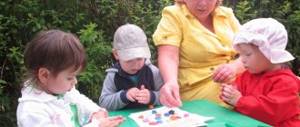History of bread for children
What was the first bread?
Each product has its own history. Such a universal product as bread exists in almost all countries of the world. Bread has come a long, complex way before it takes the form of beautiful loaves on our table.
15 thousand years ago, our ancestors, in search of food, came across cereal plants. Ancient people simply collected grains and ate them raw. Later, they learned to grind the grains between stones, pour water into the resulting mass, reminiscent of flour, and cook it. So we can say with confidence that the first bread was a nutritious mushy mass of flour and water. People realized that porridge made from roasted grains tasted better and began to make it thicker and bake it. The first unleavened bread cakes were produced - the world history of bread baking begins with them. During these times, the first ovens, dishes, mortars for grinding grains, and mills with millstones were created.
Fluke
The lush bread did not appear immediately, it happened about 5
thousand years ago. According to legend, one of the slaves in ancient Egypt forgot about the dough, and it fermented a little. He couldn’t leave his owners without bread, so he still put the dough in the oven. Everyone was surprised by the appetizing appearance and wonderful taste of the new loaf. It retained freshness longer and was better absorbed by the body. Instead of punishment, the slave was asked to tell what he did to make the bread so soft and rosy. Having broken the bread, the ancient people saw that it was full of small holes inside; this was air that appeared during the fermentation process.
In Russia in XI
century, sour rye bread was baked using sourdough from previous baking. The sourdough recipe has been passed down from generation to generation.
Yeast did not exist in its pure form, so instead, fermented grape juice, beer foam, leaven made from flour and wine were mixed into the dough, or the dough was simply left for a long time so that it would rise on its own. In Rome and Greece, bread made from slightly fermented dough was considered food for rich people; it was served as a separate dish. The slaves had to be content with coarse bread; the dough for it was not fermented, but baked immediately. Different variations of bread appeared - with milk, sugar, poppy seeds, honey.
The first bakers and automation
The ability to bake delicious, fluffy bread was highly valued in those days, so bakers were cherished. For the murder of a baker, a man was immediately executed, because he could provoke a famine. But if the baker himself made bad bread, he was punished to the fullest extent, because people obtained flour with great difficulty, and it was impossible to transfer it to unsuccessful baking. And recipes for good bread were kept secret. Bakers and their students over time developed certain recipes, norms and rules for baking bread.
By the 19th century, the process of growing wheat, harvesting, milling, and baking was automated. And of course, now we cannot fully understand how difficult it was for our ancestors to get bread. Now making homemade bread will not be difficult.
Bread as the basis of life
For Russians, bread is more than just a food product; it is part of their cultural heritage. There are many traditions where bread plays a big role; remember even the tradition of meeting honored guests with “bread and salt”, a loaf for newlyweds. Bread is treated with reverence and children are taught this.
It is unlikely that people will ever stop eating bread. Bread production will never lose its relevance.
No matter what form bread appears before us - flatbread, loaf or baguette, it remains the connecting link of all countries of the world. Bread is a symbol of hard work and well-being created with your own hands.




